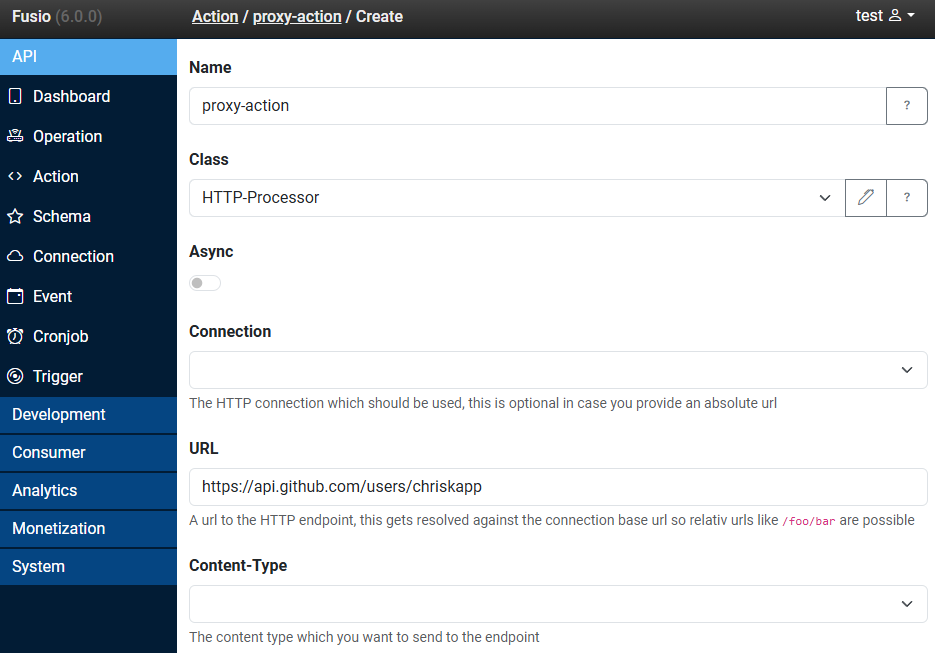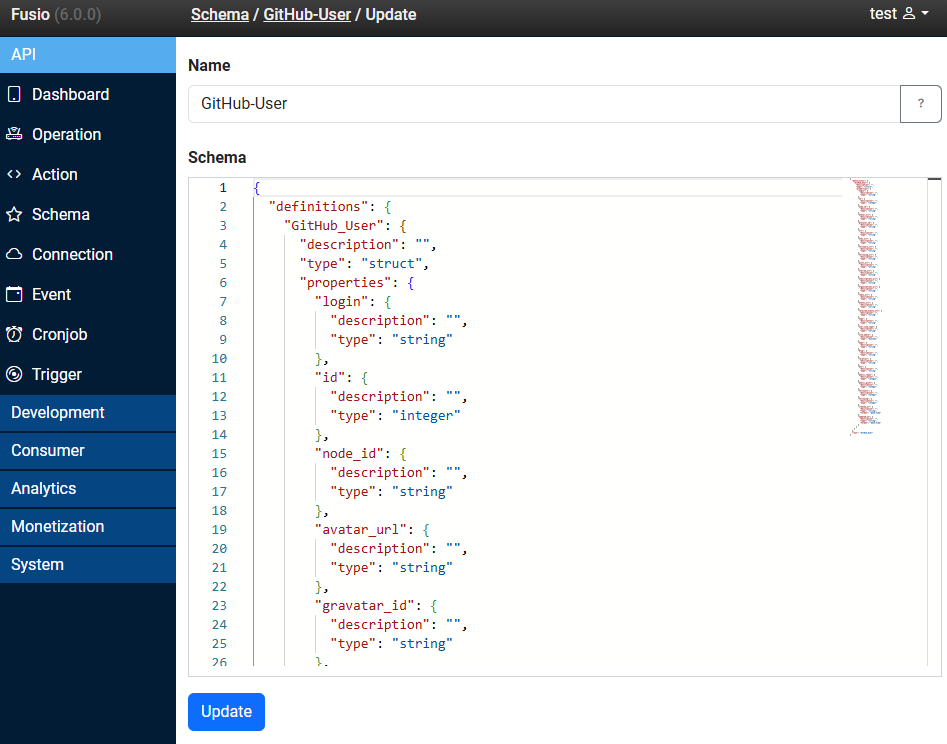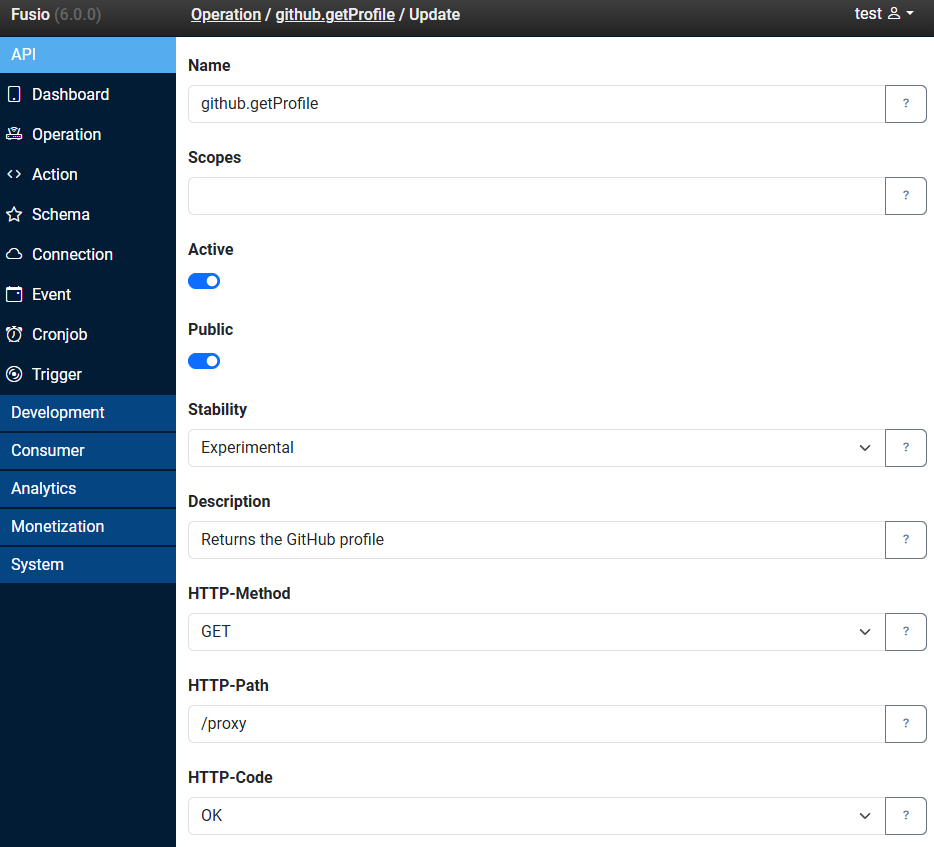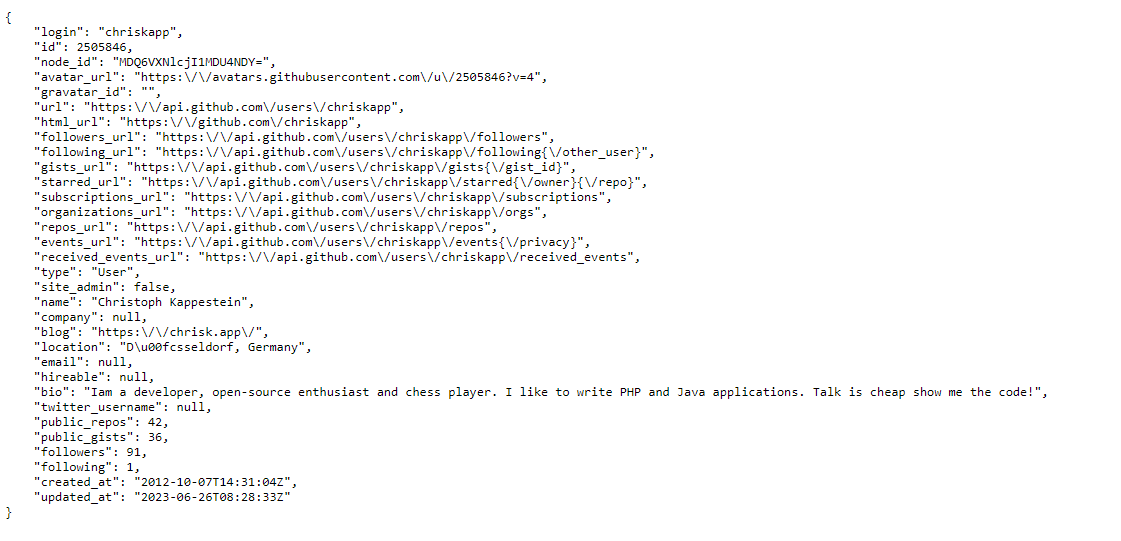Getting started
To get started you first need a running installation of Fusio. If you have not already installed Fusio please take a look at the installation page. Fusio is an open source API management platform which helps to create innovative API solutions. Through Fusio you can quickly build a state-of-the-art API, set up a developer portal and monetize your API.
This page will explain the first steps on how to proxy an operation to an internal API. We create an operation at the backend which executes a specific action, a schema which describes the payload and an action which proxies to a remote API.
Creating an action
To start we create an action. An action is a small function (i.e. like a serverless lambda function) which receives a HTTP request and produces a response. Fusio already contains many prebuilt actions which can solve many tasks, such as, proxy an HTTP request to a remote API or build an API based on a database table. In this example we simply create an action which proxies a remote API:

Creating a schema
Next we create a schema to describe the response of our action. This step is optional, but creating a schema is highly recommended. The schema is then the contract to your API consumers; how the request and response format is designed. Internally Fusio uses TypeSchema to describe the JSON format. Through a schema, Fusio can then automatically create an OpenAPI specification or generate a client SDK.

Creating an operation
Lastly, we need to create an operation which then invokes our action. An operation contains meta information like a description, the request and response schemas, and which action should be invoked. In our example we simply select the action and the schema which we have created.

API Response
Now we can call the /me endpoint at our API which then proxies the HTTP request to our remote API and returns the
response.

Conclusion
This was a first basic example on how to create a simple API endpoint with Fusio. Fusio provides then out of the box many features to build a great API product. We try to provide all features of a modern API solution which you also find at most popular developer portals. Since Fusio can solve many use cases, we have structured our documentation into three parts:
Architecture overview
In this chapter we provide a first overview about the architecture, the following diagram shows the basic entities of Fusio:

Operation
An operation provides a way to invoke an action which executes the business logic of your API, it is assigned to a
specific HTTP method and path i.e. GET /hello/world. Besides this the operation describes through a schema how the
parameters, incoming and outgoing data of your endpoint is designed. Fusio then also uses those schemas to validate
request data and to automatically generate an OpenAPI specification or client SDK.
Action
The action contains the actual business logic of your API i.e. to proxy a request to a remote API or directly selects data from a database table. You can use either one of our existing actions to solve your problem or you can also easily build your own action.
Schema
The schema simply describes a JSON payload. We use a schema to describe i.e. request/response data of a route or also event payloads which are dispatched by the system. Every schema is based on TypeSchema which we also use to generate a client SDK or other specifications like OpenAPI.
Event
An event gets dispatched by an action in your API, it can be used to create an async workflow where external parties are notified in case a specific event occurred at your API. I.e. you could create an event "contract_created" and dispatch this event everytime a contract was created at your API, then external users can register a webhook and Fusio will invoke this webhook once a contract was created. You can describe the payload of your event also by a schema.
Cronjob
A cronjob provides a way to invoke an action at a periodical interval.
Trigger
A trigger gets invoked if an event was dispatched. Each trigger has an assigned action which then gets executed.
Connection
A connection provides access to a remote service. I.e. we have a SQL connection which works with a SQL database or a
HTTP connection which works with a remote HTTP server. One key concept is that a connection always uses an external
library to connect to the remote service i.e for the SQL connection we use the doctrine/dbal library and for the HTTP
connection we use guzzlehttp/guzzle. A connection returns always a fully configured client which you can use in your
action. A remote service can be also an external API i.e. we provide connections to Stripe or also AWS which works with
the official SDK. In your action you can then use those connections to implement your business logic.